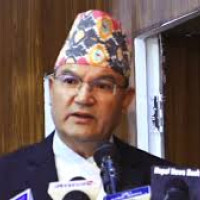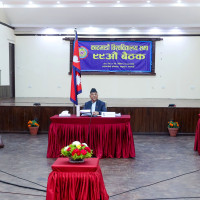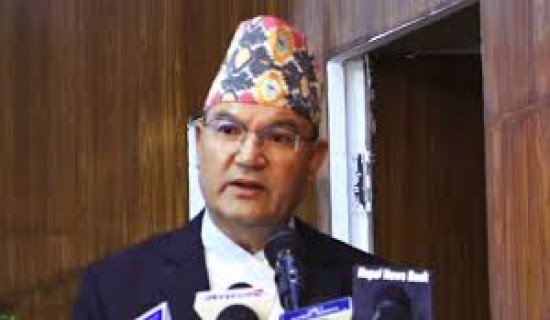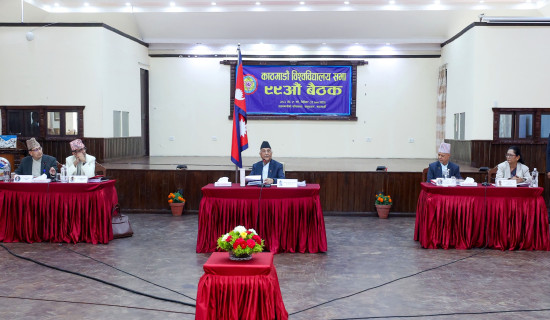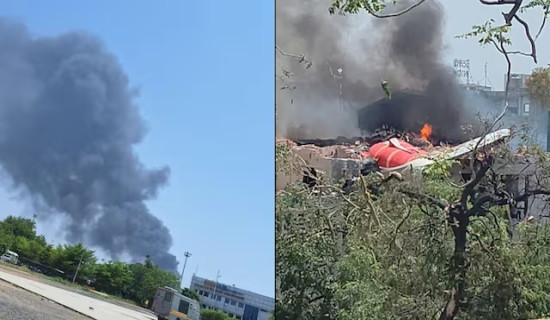- Thursday, 12 June 2025
World Leprosy Day being marked with various programmes today
Kathmandu, Jan 28: The World Leprosy Day is being observed across the country today by organising various public awareness programmes.
The theme for World Leprosy Day 2024 is “Beat Leprosy”, which encapsulates the dual objectives of the day: to eradicate the stigma associated with leprosy and to promote the dignity of people affected by the disease, according to the World Health Organisation (WHO). The World Leprosy Day is celebrated on the last Sunday of January.
At a programme organised by the Department of Health Services here today on the occasion, Director at the Epidemiology and Disease Control Division, Dr Rudra Prasad Marasini, said many people are still suffering from leprosy in the world.
"Many people are still affected from leprosy in the world. They have been facing discrimination and lack of access to health services. Immediate efforts and commitment of the government and all bodies concerned are needed to eliminate the disease," added Dr Marasini.
A French Philanthropist Raoul Follereau had started celebrating the World Leprosy Day from 1954 with an objective of preventing leprosy through proper treatment, controlling it through public awareness and ending discrimination against those suffering from leprosy disease.
Dr Prashanna Napit, the Head of Leprosy Control and Disability Management Section, said leprosy is rarely contagious disease caused by a microbe called Mycobacterium leprae.
Leprosy was declared eliminated as the public health problem at the national level in Nepal on January 19, 2010. This means that the prevalence of leprosy in Nepal was less than one in every 10,000 people. At that time, the prevalence rate of leprosy at the national level was 0.77 percent.
According to the Leprosy Control Section, this rate is 0.85 until the end of Fiscal Year 2022/23 while the leprosy prevalence rate is less than one person per 10,000 people in 14 districts.
The data shared by the Section shows that around 2,500 to 3,000 new leprosy patients are found in Nepal every year.
The government has been running programmes like searching for active leprosy cases, leprosy prevention, public awareness and capacity building, managing and rehabilitating the non-cooperative patients and the multi-drug management for controlling the disease.
World Neglected Tropical Disease Day
Similarly, the World Neglected Tropical Disease Day is also being marked today around the theme of 'Unite. Act. Eliminate'.
World Neglected Tropical Diseases Day is observed every year on 30 January
On World Neglected Tropical Disease Day 2024, WHO is calling on everybody, including leaders and communities, to unite and act to address the inequalities that drive neglected tropical diseases (NTDs) and to make bold, sustainable investments to free the estimated 1.62 billion people, in the world’s most vulnerable communities, from a vicious cycle of disease and poverty.
The purpose of World Neglected Tropical Diseases Day is to raise the profile of neglected tropical diseases, the suffering they cause and to garner support towards their control, elimination and eradication, in line with the programmatic targets set out in the NTD road map 2021−2030 and the commitments of the 2022 Kigali declaration on neglected tropical diseases.
On 31 May 2021, the Seventy-fourth World Health Assembly recognized 30 January as World Neglected Tropical Diseases Day.
Neglected Tropical Diseases are communicable diseases that prevail in tropical and subtropical countries and affect more than one billion people. Global targets for 2030 and milestones are set out to prevent, control, eliminate and eradicate a diverse set of 20 diseases and disease groups. They mainly affect populations living in poverty, in close contact with infectious vectors.
Besides leprosy, the other NTDs are Buruli Ulcer, Chagas Disease, Dengue and Chikungunya, Guinea-worm Disease, Echinococcosis, Foodborne Trematode Infections, Human African Trypanosomiasis (Sleeping Sickness), Leishmaniasis, Lymphatic Filariasis (Elephantitis), Mycetoma, Onchocerciasis (River Blindness), Rabies, Scabies, Schistosomiasis, Soil-transmitted Helminthiases, Snakebite Envenoming, Taeniasis and Cysticercosis, Trachoma, and Yaws.
Nepal has eliminated trachoma in 2018 and Kala-azar in 2016 while it has set target of eliminating elephantiasis, leprosy and rabies within 2023.(RSS)


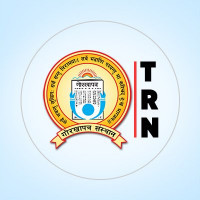
-original-thumb.jpg)

